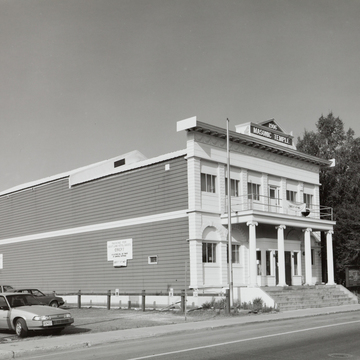The Renaissance Revival-style facade of the Masonic Temple is an unusually ambitious if awkward composition. Executed in pressed metal, it was originally painted a light reddish tan. Round-arch openings on the first floor (two of which have been altered), a one-story tetrastyle Ionic portico (which had an elaborate cornice with balustrade above), swags and garlands in the frieze, a modillioned cornice, and a nameplate in the pediment all present a grand appearance to the street. Behind this facade is a simple two-story, wood-framed building.
The Fairbanks Masons began as a club in 1904, receiving their charter in 1908. That year, they bought this building, which had been constructed in 1906 for the Tanana Commercial Company. The Masons extended the building to the rear, giving it its present dimensions of 32 feet by 60 feet. They also raised it in 1913 in order to create a basement and added this facade in 1916.

